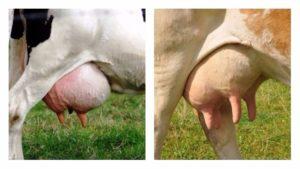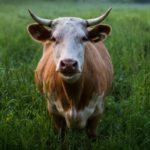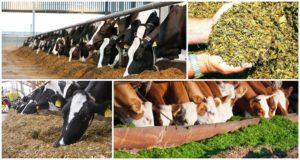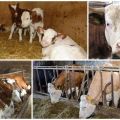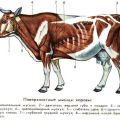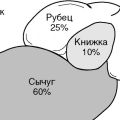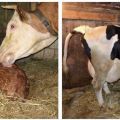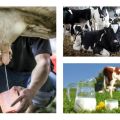Where is the cow's hunger pit and its assessment scale, maklok massage
To evaluate the effectiveness of feeding, how full the rumen in cattle is, you need to know what a hungry fossa (depression) is in a cow and where it is located. According to her condition, it is possible not only to determine how correctly the diet is drawn up and, if necessary, to make adjustments in nutrition in time, but also to learn about the rate of metabolic processes in the body, the general state of health. How is the condition of the cattle cavity assessed? What is the norm and what is the deviation?
What is a hungry hole
The hungry fossa in cattle is located on the body of ruminant artiodactyls, clearly visible in the pelvic region. The depression formed by the costal arch (the last rib), the transverse processes of the vertebrae and the maclok is triangular in shape.
Important! Maklok is a kind of protrusion on the lower back of cattle, which forms the pelvic bone.
Scale for assessing the hungry fossa
The state of the hungry fossa is assessed on a 5-point scale:
- 1 point. Such an indicator indicates an extremely sunken trough. The skin is tightly stretched, wraps around the transverse vertebrae. From the costal arch to the vertex, the fossa is strongly concave inward, wider than the palm, which is an alarming symptom.
- 2 points. The width of the fossa corresponds to the width of the palm. The depression has a clearly outlined triangular or wedge-shaped shape, with rounded corners. The skin is tight and slightly stretches the processes of the vertebrae. From the crotch to the costal arch, there is a skin fold at an angle.
- 3 points. This indicator indicates the beginning of filling the hungry fossa towards the spinal column. The depression is clearly visible behind the arch of the rib. Above the processes of the vertebrae, the skin is concave inward and closer to the vertebra it is curved outward. Triangular outlines are recognized.
- 4 points. The skin above the vertebrae collapses towards the peritoneum, after which it bends outward. Behind the ribs, the skin fold is even, does not form a depression. It runs parallel to the broker.
- 5 points. With this indicator of scar filling, there is no transition between the stomach and the arch of the last rib. The ends of the vertebrae are not visible. The scar is well filled. The abdomen is rounded. The skin fold bends slightly outward, slightly convex in the area of the fossa.

Important! The assessment of the depression in cattle is carried out standing behind the animal on the left side. Examination is carried out daily, taking into account age, physiological health indicators, breed, diet.
A low score signals disorders in the nutritional system, malfunctions in the functioning of the digestive tract, as well as deteriorating health, systemic disorders in the cow's body. 1-2 points indicate inaccuracies in feeding, imbalance in diets, metabolic disorders, intestinal disorders.
One point, obtained when testing a hungry fossa in cattle, is a sign of exhaustion, the presence of chronic, acute processes in the body of ruminants, lack of access to the food supply, the fodder trunk. This indicator indicates an imbalance in nutrition, feeding cows with low-quality low-grade feed. Two points are acceptable for young cows at the beginning of lactation, in the first month after calving. If the trough is clearly visible on a 2-point score, it indicates:
- the development of systemic failures in the body of cattle;
- inflammatory processes in the digestive tract;
- metabolic disorder;
- too fast passage of food through the digestive tract;
- low digestibility of feed.

A high score indicates normal, sufficient rumen filling with feed. The criterion for the norm is 3-4 points.
Important! For dry cows, the depression score should be at least four to five points.
Three points is the optimal parameter, which indicates the normal, sufficient condition of dairy heifers at the beginning of the lactation period or in the first two weeks after starting, which is associated with the restructuring of the body, the acceleration of metabolism.
How does hunger fossa assessment help in practice?
In practice, veterinarians and livestock specialists should monitor the condition of the hungry fossa in cattle to determine the relationship between feed intake, condition and health status of ruminant artiodactyls. Trench testing should also be done when cattle are transferred to new diets, one week before the expected calving date, 2-6 days and 8-10 after the birth of newborn calves.
Risk of temperature rise
A few days before calving, as well as in the first 3-5 days from the beginning of lactation, cows notice a slight increase in the total body temperature by 0.5-1.5 degrees, which is the norm.
Important! An increase in temperature by 1-2 degrees on the first day after calving does not always indicate the development of postpartum complications. But in this case, veterinarians must maintain strict control over the condition of the animals.
An increase in temperature above the physiological norm is noted if, when assessing a depression, the indicator in heifers was 1-2 points. If in cattle the hungry fossa was assessed at one point, in such individuals in the first days after lactation, pathologies, diseases, systemic functional failures of various etiopathogenesis were diagnosed.
Important! Cows with a score of two before or after calving are always at risk and need systematic monitoring.
Cows whose score was within 3-5, if there were no pathologies, postpartum complications, chronic diseases, had normal temperature indicators.
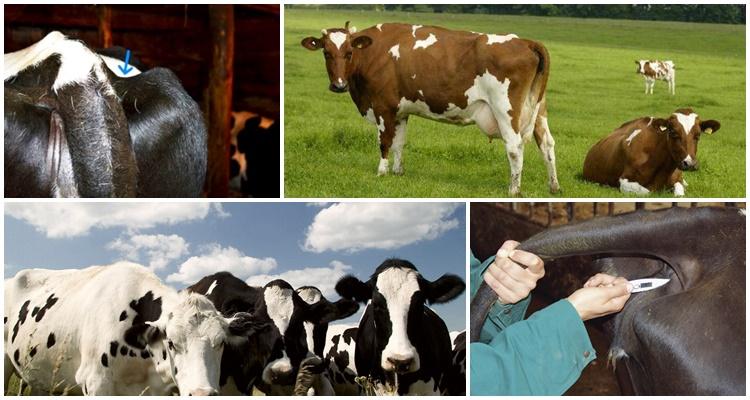
Feed intake
With regard to the consumption of cattle feed when assessing the hungry fossa at 1-2 points, such animals, in comparison with individuals whose score was in the range of 3-5, consumed less food. The animals were diagnosed with a low increase in live weight, loose condition, intestinal disorders, scar atony, other pathologies, disorders in the gastrointestinal tract.
To normalize the state of ruminants, they were transferred to new diets, taking into account their age, physiological characteristics, and health status. If necessary, the diet was supplemented with probiotics, vitamin and mineral complexes. Symptomatic drugs were administered to normalize metabolism, digestion, and general condition.
Calving
After the birth of calves in the studied group of 100% cows in the first days after calving, 60-70% of the cows had a score of 1-2 points when testing the cavity, which was an alarming indicator. Only in 30-35% of heifers after the birth of offspring, the state on the scale was within 3-4 points.
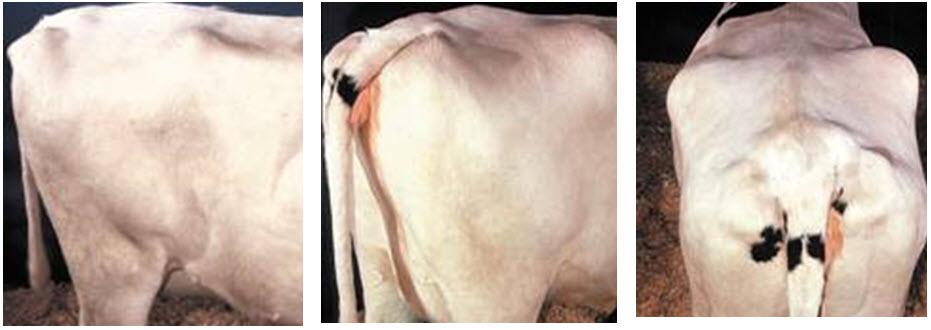
Metabolism
If we assess the state of ruminants, the metabolic rate by testing the cavity a week before calving and 10-12 days after the birth of babies, in the test groups, even at 9-10 weeks, veterinarians noted metabolic disruptions, systemic disorders in the work of internal organs. At the minimum scores (1-3), the cattle group showed an accelerated breakdown of fatty acids. This state inevitably leads to ketosis.
What to do in case of a deviation from the norm?
With a hollow fossa in cattle (1-2 points), agricultural animals should be under constant control of veterinarians, livestock specialists, farm workers, livestock complexes. It is necessary:
- conduct a rapid test for ketosis;
- pay attention to the diet and, if necessary, adjust the diet;
- measure the amount of dry matter in the diet;
- daily monitor temperature indicators, health status;
- prescribe medicines, enzymes, vitamins to normalize metabolism, general condition.
Important! When the scar swells, the accumulation of gases is prescribed massage. With rhythmic movements, press on the depression on the left side of the cow's body for 10-20 minutes.
An audit of the main feed is mandatory. They check the energy value of food, the quality of food consumed by animals. If necessary, the amount of concentrated feed in the diet is increased for dry cows. They pay attention to the conditions of detention, compliance with sanitary and hygienic standards, cleanliness of feeders, drinkers. Carry out a check of the density of keeping animals in barns, premises.
